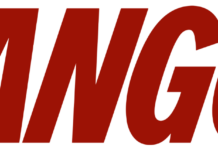Welcome to this article about How to Start a Clothing Boutique Business online and offline via Afrokonnect. Being your own boss and running a thriving boutique is a realistic goal for many people.
However, starting an online boutique or an offline store can be challenging due of the various factors to consider. “Should you establish an online storefront or a traditional storefront with bricks and mortar? What are the benefits and drawbacks of this? What are the typical initial financial investments required to launch a fashion boutique?”
All these are questions that will be running through one’s mind during the early stages. If you don’t structure your business in a natural and practical way, things could quickly get overwhelming for you. Once you’ve established a solid customer base and have enough capital, you can expand your internet business into a physical storefront.
According to projections made by Statista, the value of the online retail market for clothing and accessories would exceed $153 billion. When it comes to having questions about how to launch a successful online boutique business, you most certainly are not alone. The following is a complete and comprehensive guide for rookies that will walk you through the process of establishing your own boutique business. But first.
What Exactly Is a Boutique?
The term “boutique” refers to a type of retail establishment that carries an original and curated collection of apparel and accessories, with an emphasis on items that are on the cutting edge of fashion. Customers can have access to the newest fashion trends without going over their spending limits at boutiques, which can be found in cities, smaller towns, and even online. The modern boutique welcomes both men and women who are prepared to make an investment in multiple pieces of high-quality clothing and do not limit themselves to a single wardrobe for every event.
Which is Better for Starting a Clothing Business; Offline Boutique or an Online Store?
When beginning the process of starting an online boutique or your clothing business, the first thing you will need to do is determine the target audience for your particular brand of merchandise. In order to attract and retain customers, who are referred to as clients in this field, you need to have an assortment of unique apparel and accessories. This normally takes some time given the number of new companies that launch each day.
The effort will be worthwhile, though, if people choose your store rather than competitors, since they can easily find what they need without having to waste time browsing other websites. I recommend you check out any of these 17 Business Ideas in USA with low startup Investment.
Note this before Starting a Clothing Business – Online Boutique or Offline Store
-
Constructing a Traditional Shopping Location
In the past, consumers had to make their purchases in a traditional brick-and-mortar establishment. In today’s technologically evolved world, buyers find that online retailers are just as convenient and popular as traditional ones. Some enjoy shopping with family or friends in malls; Many find it soothing and entertaining because they don’t have to bother about packing up their purchases.
-
Constructing an E-Commerce Website
The creation of an online store is the most effective method for boutique enterprises to advertise and sell their wares. Customers who want additional information or require assistance making purchasing selections will find it convenient to use the online store,
Which is a website that includes all of your products, along with its specifics and price, as well as affiliate links. The platform, layout, and functionality of the site must be chosen. Additionally, it is a good idea to section off stores into other categories, such as “New Arrivals” or “Bestsellers.”
-
Online versus Offline Sales Statistics
Statistics indicate, as stated by the Department of Commerce of the United States of America: Total retail sales increased from the previous year’s Q4’s $1.38 trillion to the current year’s Q1’s $1.47 trillion. That constitutes a 6.9 percent rise in value. Sales from online marketplaces reached $156.39 billion in Q4, an increase of 16% from Q3. These days, the majority of purchases require both online research and hands-on inspection of the product.
Reading up on a product is typically the first step in making a purchase before going to the physical location of the business where it is sold. On the other hand, an investment may begin when a person discovers something they are interested in but wishes they had more knowledge before reaching a choice.
How to Start a Clothing Boutique Business (Online & Offline) in 8 Simple Steps
The most prestigious shops in the industry didn’t magically arise overnight. These business owners had a strategy and a process in place, and they weren’t afraid to try things out and see what worked. In the following part, I will outline the 8 simple steps necessary to launch an online boutique business.
Step 1: Determine Your Boutique Business’s Niche
Creative businesses may know what to market, but you may not. However, the fun is in developing your product and finding your market. What exactly do we mean when we say “niche”? When opening a boutique, it is not necessary to try to please all customers.
If you’re in the market for handmade jewelry or children’s clothing, for example, you may want to focus on a niche market. And don’t forget to keep your ideal consumer in mind at all times so that they continue to be interested in and content with the things you offer them!
It wouldn’t make any sense, for instance, to branch out into selling women’s bikinis if your business specializes on selling men’s athletic shorts and shirts. You’ll want to make sure that the products you sell at your boutique are ones that encourage clients to return frequently and fill their shopping bags with new acquisitions,
So that you can boost your sales and increase your profits too in the process. It is considerably more difficult to acquire new customers than it is to sell products or services to ones that already exist, thus it is essential to keep client lifetime value in mind.
Step 2: Determine the Appropriate Location – Setting up a Boutique
The importance of locating a boutique in an appropriate environment cannot be overstated. It is essential that it be situated in an accessible area that is always close to a parking lot and has a high volume of foot traffic. If your boutique sells primarily clothing, you should allocate at least half of the floor space to displaying the merchandise. Extra space for storing and displaying products of all sizes and variety is a must for any store with a significant customer base.
If the majority of your customers are career women, you should locate your store in close proximity to commercial areas, shopping malls, or the central business district. Carry out study on the internet to discover the origins of other fashion firms and boutiques that are comparable to your own.
This provides you with a reasonable sense of the locations of the good business sites. Many downtown neighborhoods attract customers from near and far because of the abundance of unique boutiques and other businesses. The level of rivalry in these areas is high due to the presence of a number of small enterprises that are all vying for the same clients. Investigate potential locations for a new clothing boutique by going to the downtown areas, retail malls, and outlet stores in the neighborhood.
How to Start an Online Clothing Business – Boutique Startup
Step 3: Taking stock of what you have available
If you are thinking about starting a boutique business, it is important to plan out the types of items that will be in your store’s inventory. You need products that people are interested in and willing to buy, such as women’s apparel and accessories or children’s shoes.
There is no predetermined number of items in stock; rather, the quantity changes depending on the individual. However, if at all possible, you should avoid selecting more than one item from each category. If you did so, the shop would appear to be overly crowded. Getting a handle on your inventory is the first step in running a successful online or offline boutique and after you’ve done that, you’ll have fewer things to worry about moving forward.
You consider using any of the best point of sale Machines for payment purposes. The following are some things that should be kept in mind before starting a boutique business online or a physical store:
- The development of new items will require a considerable amount of time investment.
- It will be challenging to scale a business of this nature.
- Do not undercharge customers to the point where the value of your labor cannot be justified.
- Beginning with a relatively small offering will help you determine which products your clients prefer.
- Determine your product’s break-even price and the quantity you must sell to turn a profit.
- Be responsible for managing the stockpile.
Step 4: Finance Your Boutique
Surprisingly few things are required for you to launch your own boutique business. To keep the business going, all you need is a location, some furniture and appliances, some stock, and clients.
Many people find it difficult to take their first steps into the world of business, but happily, this venture has been made simpler than ever before, all that is required to get started is an initial investment of a small amount of both time and money:
- Renting a space costs $1 per square foot averagely, depending on size and location.
As an example, depending on your needs, you may spend anywhere from $500 to $2000 on equipment like sewing machines and cutting tables.
- If you simply intend to sell clothing, you should begin with a limited inventory, such as five dresses at the most, until you see consistent revenue coming in.
You should think about the many forms of investment capital that are involved in running your boutique business in order to increase the likelihood that it will be profitable. First and foremost, “hard” money would be obtained by taking out a loan from the bank.
Owners of “soft” funds, such savings and loans from loved ones, are familiar with how businesses function. Equity finance is the final option for small enterprises looking for financial backing. By buying firm shares, an investor becomes a part-owner and receives dividends or profit-sharing. There is also the possibility of “sweat” equity, in which investors obtain stock in exchange for providing in-kind services rather than cash. You can read more about How to raise Capital for A start up Business.
How to Start a Boutique Business Online and Turn it to a Successful offline store
Step 5: Ensure Consistency across your Brand
The process of branding a product or service is among the most difficult that a business owner may face. A compelling brand is the result of marketing that is original and reliable and that engages customers with sincerity. You must grasp your fashion business, ideals, and brand’s embodiment. You will also be required to make decisions in a manner that is compatible with the ideas, concepts, and goals of the customers. To begin going, you need to complete these important steps:
i. Jot down the name of the clothing label that you run.
You should first put pen to paper and determine the identity of your fashion brand if you are considering launching your own fashion label. Thus, if things go awry in the future, you will know that it was not due to a random decision or impulse but rather to a precise cause. There is no requirement for structure, but it should be well thought out to avoid unpleasant shocks. Your company’s name should get something positive out of it, whether it’s to:
- A clear and concise mission statement
- A proclamation of the future
- The argument for the product’s worth
- Either on a whiteboard or digitally, draw a diagram of the process.
- Give an explanation of your goal in a single word.
If you put your plans in writing, you may refer back to them as your company expands.
ii. Compile an official brand guide.
Create a brand guide to define your fashion label in depth. It’s a way to convey your brand’s values and principles to followers, customers, and business associates in the fashion industry. In most cases, a brand’s handbook will consist of the following:
- Plan of Action – Whom they work for and how they communicate with their constituents
- Identities – What makes them distinctive
- Their mode of communication, or the manner in which they convey their message
- Graphics, including the company’s logo, colors, typefaces, sizes, and so on.
Your brand standards can be segmented according to several potential future scenarios, such as partnerships with other brands, for example. Be sure to give great consideration to this instrument. It’s going to be a major factor in getting you and your team ready for whatever comes next.
Additionally, as an added plus, it will assist anyone who is new to the group in being more closely familiar with the fashion brand. Don’t worry; if you’re seeking for some guidance on how to organize your standards, the internet is rife with great models that you can use as a starting point.
iii. Don’t delay
When you are developing your fashion brand, you should think of it as an essential component of your company. This is the strategy that will be used to guide interactions with clients and business partners in the sector.
It should demonstrate the style or language that is used on your website or in the messages on your social media accounts. You can’t just focus on this one step by itself; rather, you should incorporate it into all of your advertisements for apparel sales, shelf signage, email messages, and so on.
Step 6: Promote Your Clothing Business
After you have initially put in the effort to promote your online boutique, you will need to engage in a number of marketing activities on a daily basis. This involves advertising via email and social media platforms as well as content marketing. Social media allows people from around the world to see global and local fashion trends. Content marketing uses blogs or YouTube videos to update customers on new arrivals and forthcoming events. Fashion photographers and video producers can support this practice.
RECOMMENDED:
- How to Start a Dog Breeding Business and Make extra cash
- 18 Profitable Business Ideas and opportunities in South Africa
- How Start an E-commerce Store and make huge returns from home
Step 7: Provide Incentive Package
The phrase “sale weariness” accurately describes the condition that is afflicting the retail business. A little less than four in ten customers are willing to go to a different store in the hope of finding better prices on the items they wish to buy.
Only three percent of customers believe that boutique merchants have superior deals, in contrast to the majority of customers who believe that chain stores offer the greatest deals. Instead of caving in to the pressure that is being applied,
Smaller businesses should resist the temptation to feel as though they have to offer discount pricing that are competitive with those offered by big-box stores. Here are six sales strategies that won’t put you out much:
- Offering discounts to specific markets shouldn’t be the primary goal of your business.
- You should provide discounts that are more significant, but less frequently.
- Instead of focusing on sales in an effort to bring in new clients, prioritize loyalty discounts for your current clientele.
- Write down the items that need to be marked down.
- It is recommended to make advantage of predictive analytics.
Step 8: Rethink, Reinvent, and Re-Create What You Have Already Done

When you first open your store, it’s important to analyze the numbers to see what’s working and what isn’t. Then make adjustments or improvements like:
- Feature your best-selling items prominently on the homepage of your website.
- Poor-performing pages get fresh product copy or images.
- Moving the locations where customers are most likely to abandon their shopping carts.
- Evaluating products and adding testimonies from previous purchasers.
- Special prices and limited-time offers during the Christmas season.
You can also get in touch with your customers on a more personal level and inquire about their requirements, but doing so in a polite manner is required and very important.
How to Start a Boutique Business Online
Conclusion: Clothing Business
In this article we tried to explain and breakdown the steps required to start a clothing boutique business online and offline. However, you need to know that there’s no manual for starting a boutique business.
You will make mistakes and fail, but, make sure you learn from your mistakes and improve on them, that is how you grow your Clothing Business. This brings us to the end of this publication about How to Start a Clothing Boutique Business online and offline via Afrokonnect.















